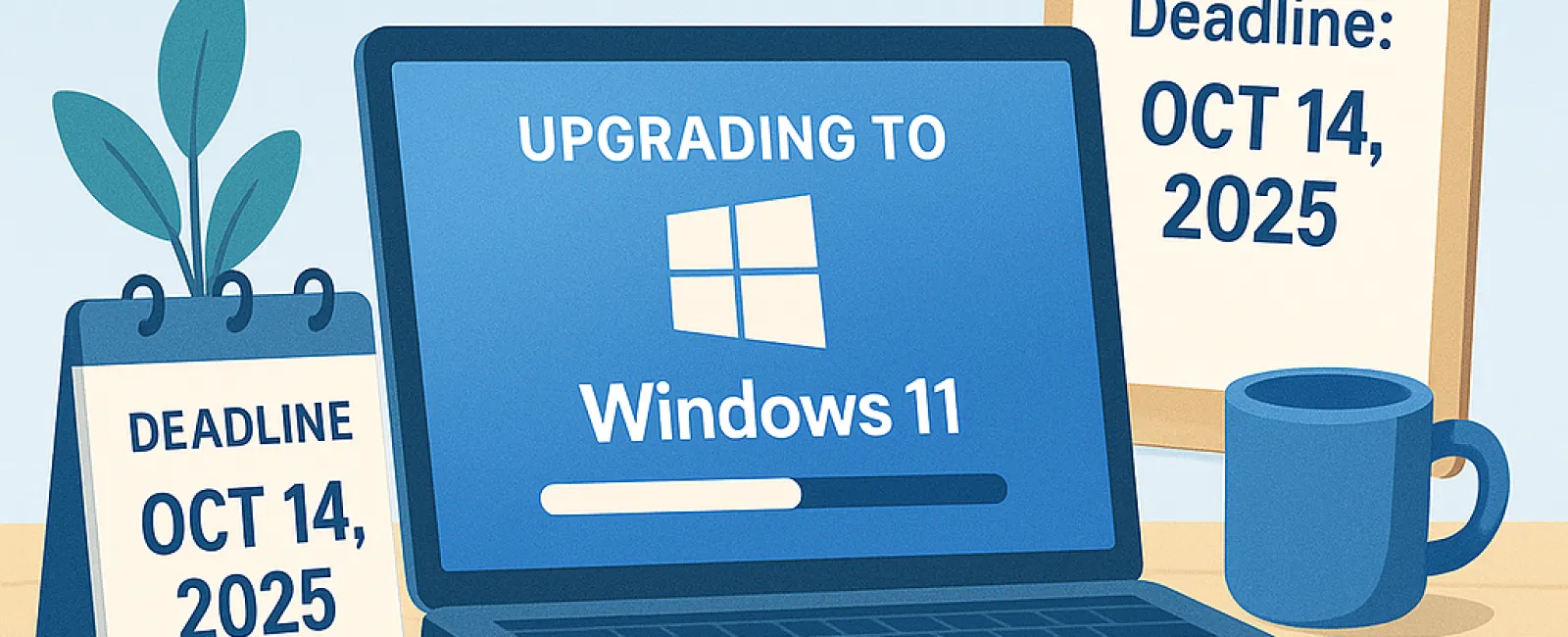June 23, 2025
Still using Windows 10 on your business computers? Time is running out fast.
After October 14, 2025, Microsoft will officially stop supporting Windows 10. This means no more security updates, bug fixes, or technical assistance.
But the real cost for business owners isn't just about upgrading someday.
It's about the risks and expenses you face by waiting.
Delaying Your Upgrade Is A Costly Mistake
We understand—upgrading every device in your company isn't a fun or cheap task. It's tempting to put it off… until something goes wrong.
But here's what procrastination really costs you:
1. You Lose Your Security Shield
After support ends, any new security flaws become your problem.
Cybercriminals target outdated systems because they're easy prey. It's like locking the front door but leaving the windows wide open.
A single breach could cost thousands—or even put your entire business at risk.
2. Compatibility Problems With Software And Hardware
Many essential business applications—accounting software, CRMs, and industry-specific tools—are already dropping support for Windows 10.
If your systems fail during a critical project or client presentation, what's the cost?
It's not just software—new printers, peripherals, and security devices may also stop working properly with your outdated OS.
3. Decreased Productivity
Old systems run slower, crash more often, and frustrate your team. Even minor delays add up, lowering efficiency, morale, and your competitive edge.
If each employee loses 10-15 minutes daily to tech issues, how much productivity—and money—are you losing monthly?
4. Emergency Upgrades Cost More
Waiting until systems fail or your team is locked out doesn't just cause stress—it triggers expensive emergency spending:
● Emergency hardware orders
● Rush IT service fees
● Business downtime during replacements
A little foresight now saves you from costly chaos later.
5. Risk Of Compliance Violations
If your business handles sensitive data or follows regulations like HIPAA or PCI-DSS, running unsupported systems could lead to fines or legal trouble. Most compliance standards require up-to-date security—Windows 10 won't meet those after October.
What Savvy Business Owners Are Doing Today
They're taking proactive steps—not just upgrading devices, but also using this change to:
● Audit devices to identify what must be replaced
● Streamline software and tools
● Strengthen cybersecurity defenses
● Plan IT budgets thoughtfully for 2025 and beyond
How To Ensure A Seamless Upgrade
Here's our recommended approach:
● Perform a compatibility assessment - Identify which machines can run Windows 11 and which need replacement.
● Review your software - Confirm all critical applications are compatible with Windows 11 or newer.
● Budget for new hardware now - Avoid supply chain delays and price spikes later.
● Partner with a trusted IT provider - Let experts manage the transition smoothly, minimizing downtime and surprises.
Don't Wait Until The Last Minute
Delaying your upgrade until October will only increase costs, stress, and missed opportunities. We're here to help small businesses upgrade smartly: with careful planning, smooth execution, and future-ready solutions.
Click here or give us a call at 978-664-1680 to schedule your FREE 15-Minute Discovery Call. We'll help you determine what needs upgrading, what can stay, and craft a transition plan that keeps your business running seamlessly before the deadline.





